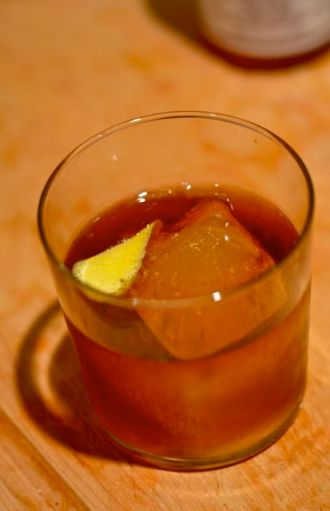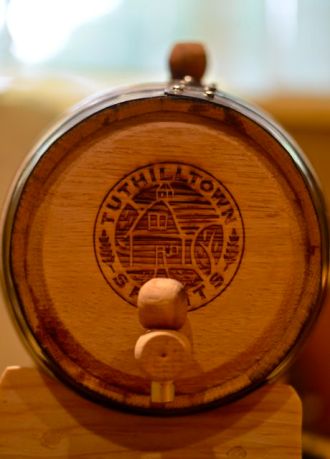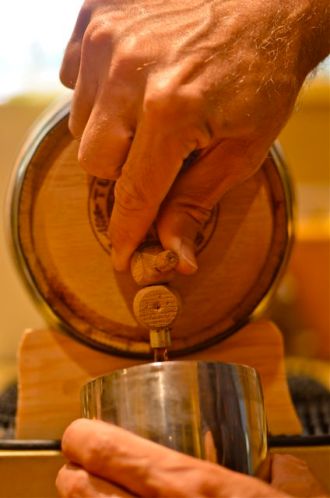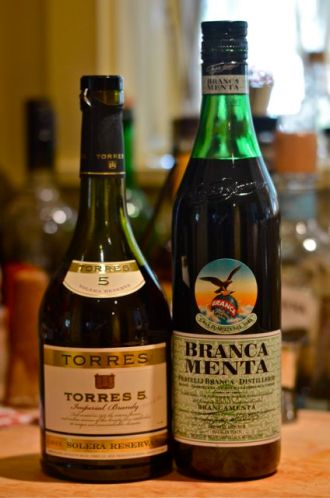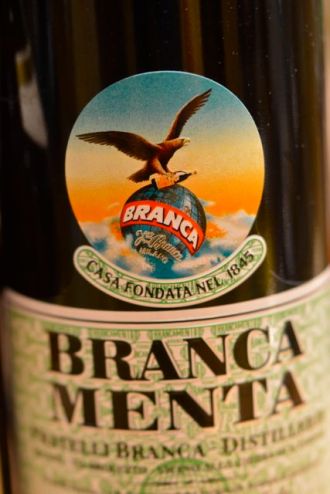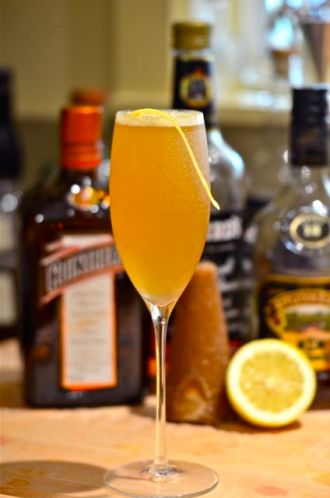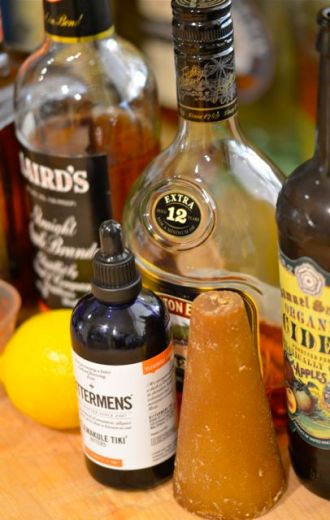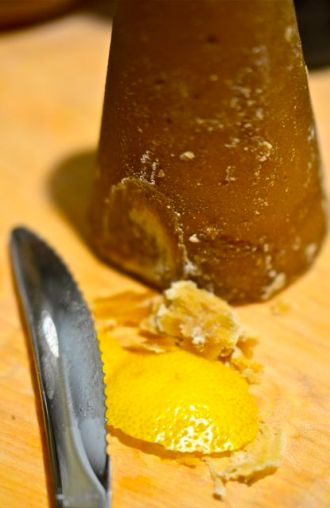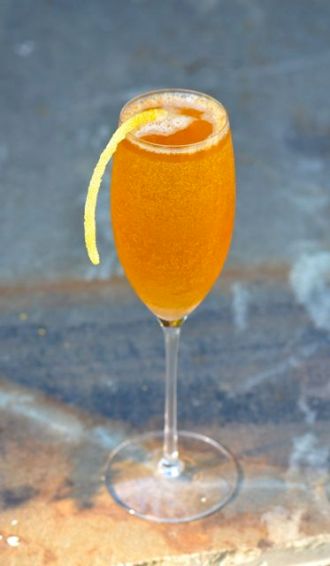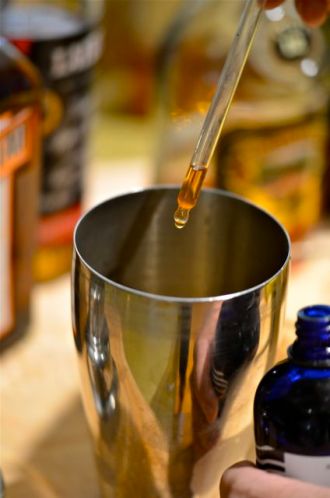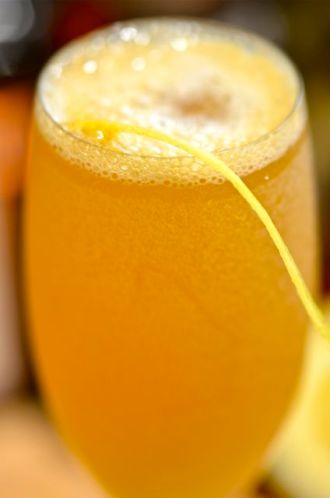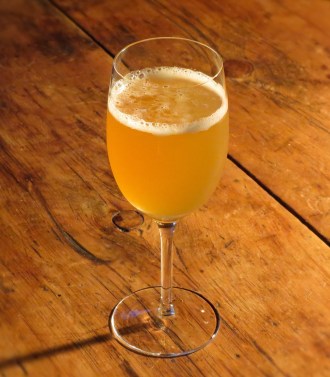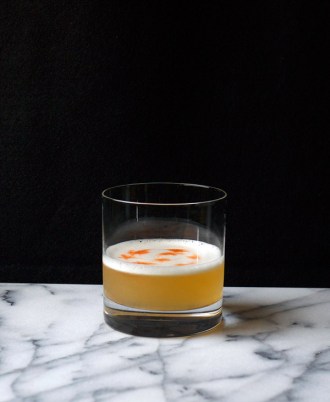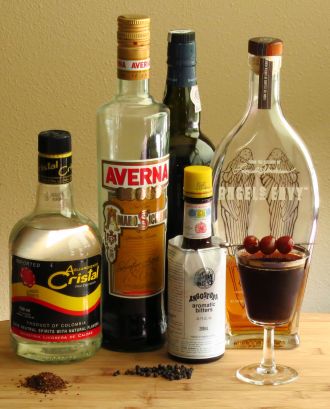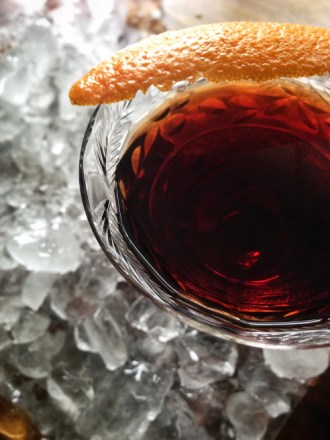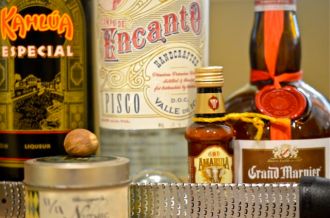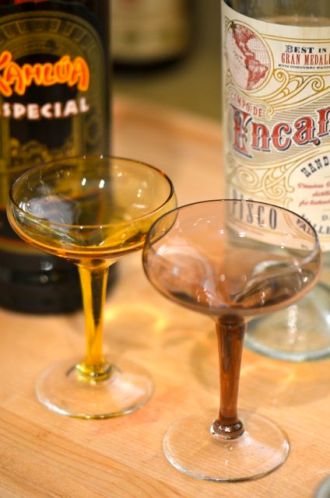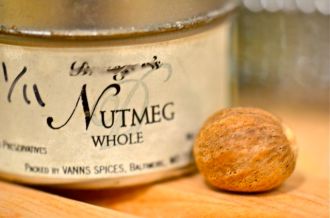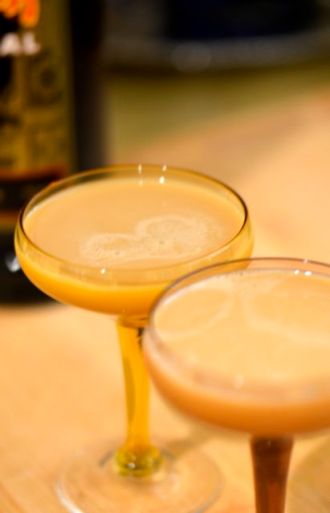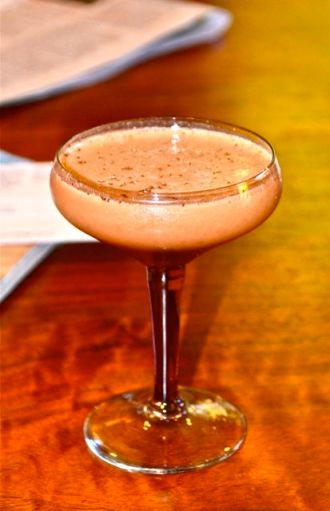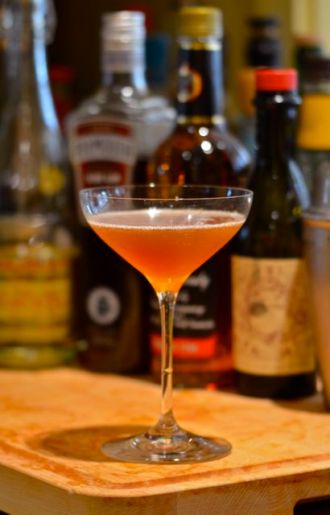 Wow, its been a while since our last post. And we have some good reasons for that…we will fill everyone in over the next few months. Let’s just say that our interest in cocktails is going to a whole new level, and a larger audience than our ever-patient family and friends.
Wow, its been a while since our last post. And we have some good reasons for that…we will fill everyone in over the next few months. Let’s just say that our interest in cocktails is going to a whole new level, and a larger audience than our ever-patient family and friends.
 Regardless, we never tire of experimenting with cocktails, so it is good to get back into the swing with Mixology Monday. We are big fans of this month’s theme of “apples” from Fred Yarm of the grandaddy of all cocktail blogs, Cocktail
Regardless, we never tire of experimenting with cocktails, so it is good to get back into the swing with Mixology Monday. We are big fans of this month’s theme of “apples” from Fred Yarm of the grandaddy of all cocktail blogs, Cocktail Virgin Slut. (Fred, it looks like we are following in your footsteps a bit). So here is the breakdown of the theme:
Apples have been an American booze staple with Johnny Appleseed as its symbolic hero. John Chapman became that legend by planting apple tree nurseries across the northern Appalachia and the Midwest. He did not choose grafting techniques to reproduce sweet edible ones, but bred them to make sour apples perfect for cider and applejack. Michael Pollan inThe Botany of Desire proclaimed, “Really, what Johnny Appleseed was doing and the reason he was welcome in every cabin in Ohio and Indiana was he was bringing the gift of alcohol to the frontier. He was our American Dionysus.” Apple products began to enter into the mixed drink literature in the 19th century with the Stone Fence appearing in Jerry Thomas’ Bartender Guide and got quite refined by the end of the century such as the Widow’s Kiss in George Kappeler’s Modern American Drinks. Indeed, apples have found their way into modern cocktails via Calvados, applejack, sparkling and still cider, apple butter, and muddled apple.
 Great theme, and we immediately knew that we would be doing an applejack cocktail. Applejack (American apple brandy) was once a staple booze in American mixology and is one of our favorite classic cocktail ingredients. Laird’s Bonded is always in our bar and the basis for our favorite riff on the Old Fashioned (applejack, rye, sugar, tiki bitters or allspice dram). But since this is Mixology Monday, we looked for something new to try.
Great theme, and we immediately knew that we would be doing an applejack cocktail. Applejack (American apple brandy) was once a staple booze in American mixology and is one of our favorite classic cocktail ingredients. Laird’s Bonded is always in our bar and the basis for our favorite riff on the Old Fashioned (applejack, rye, sugar, tiki bitters or allspice dram). But since this is Mixology Monday, we looked for something new to try.
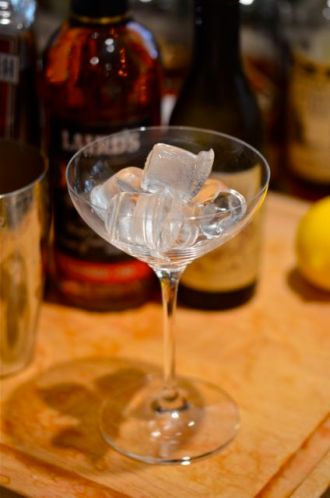 We immediately went to the PDT Cocktail Book, as it features a number of applejack cocktails, and quickly found the Persephone. Besides our enjoyment of the mythological name (we are geeks for mythology here at the Farm), the Persephone cocktail uses vermouth along with the basic ingredients of a sour. One of our all-time favorite cocktails, the Scofflaw, uses this construct (albeit with dry, rather than sweet vermouth)- so we decided to give Persephone a try.
We immediately went to the PDT Cocktail Book, as it features a number of applejack cocktails, and quickly found the Persephone. Besides our enjoyment of the mythological name (we are geeks for mythology here at the Farm), the Persephone cocktail uses vermouth along with the basic ingredients of a sour. One of our all-time favorite cocktails, the Scofflaw, uses this construct (albeit with dry, rather than sweet vermouth)- so we decided to give Persephone a try.
 Persephone didn’t disappoint. A combination of applejack, sloe gin, sweet vermouth, lemon and simple syrup, Persephone had a dry start from the applejack before you get to the sweet sloe gin, lemon and sugar, but finishes with a delightful herbal and almost sarsaparilla note from the vermouth. The original recipe suggests Dolin vermouth, but we used Carpano Antica for extra depth and that “rooty” flavor. We have since tried this cocktail with the Dolin- it is smoother and a bit sweeter, but also excellent. Your choice, we think you will be happy either way. Continue reading
Persephone didn’t disappoint. A combination of applejack, sloe gin, sweet vermouth, lemon and simple syrup, Persephone had a dry start from the applejack before you get to the sweet sloe gin, lemon and sugar, but finishes with a delightful herbal and almost sarsaparilla note from the vermouth. The original recipe suggests Dolin vermouth, but we used Carpano Antica for extra depth and that “rooty” flavor. We have since tried this cocktail with the Dolin- it is smoother and a bit sweeter, but also excellent. Your choice, we think you will be happy either way. Continue reading
